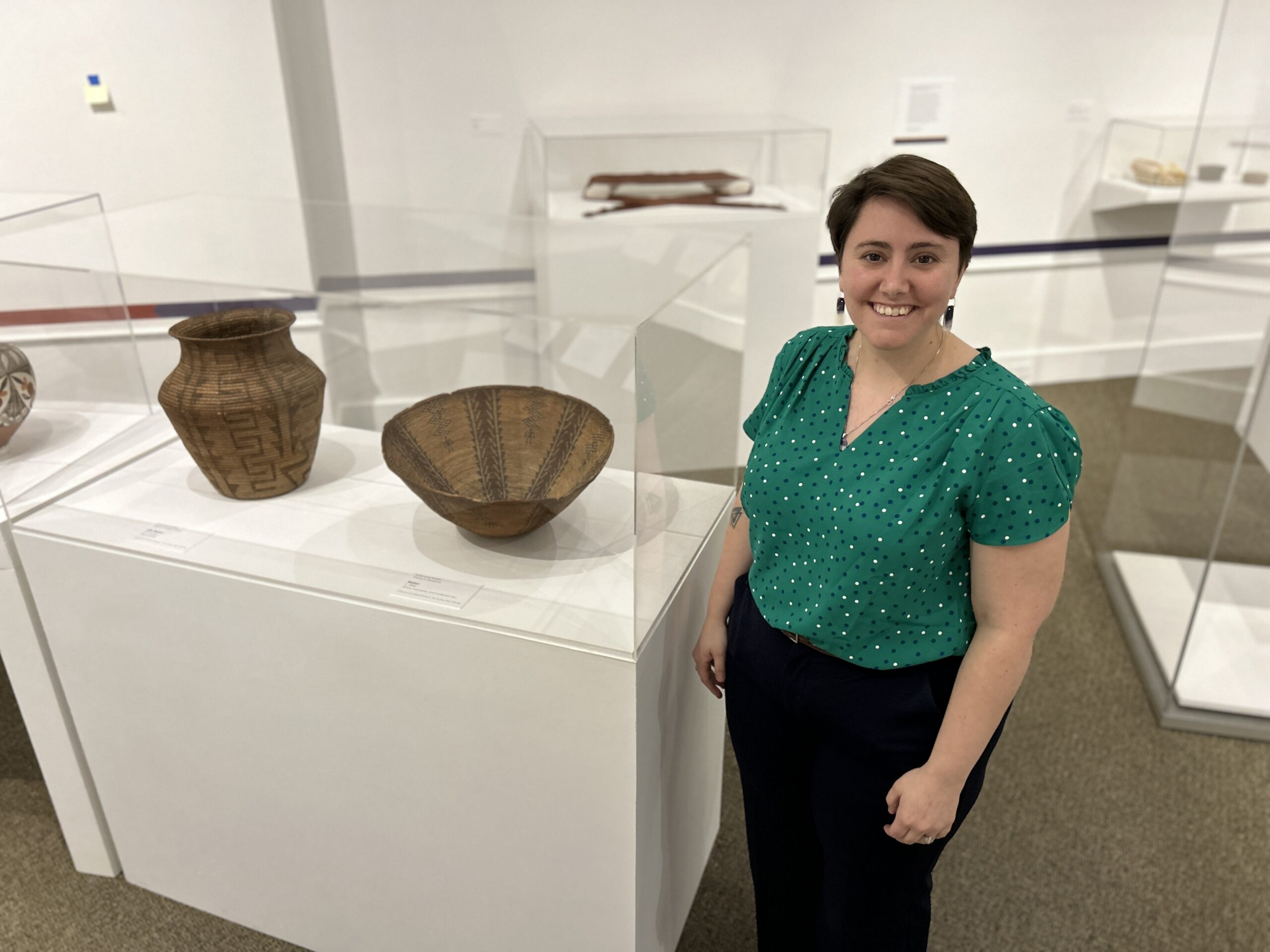
HARVARD, Mass. – Three new exhibitions highlighting both historic and contemporary Native American art open on June 15 at The Trustees’ Fruitlands Museum in Harvard. The exhibitions feature artworks from various Native American communities from throughout North America and are the beginning of a reinterpreting and reorganizing of the Fruitlands’ Native American art galleries.
In Across Boundaries Across Barriers, Native objects collected in the early 20th century by Clara Endicott Sears are reframed through a Native lens. Sears built her summer home atop Prospect Hill in Harvard in 1912 and opened the Fruitlands Farmhouse to the public in 1914. She eventually built two galleries on the property.
According to Tess Lukey, The Trustees’ Associate Curator of Native American Art, the Across Boundaries Across Barriers exhibition is organized using the framework of the seven directions, a belief shared by several Eastern Woodlands Native communities. These directions are tied to the guiding principles of the medicine wheel, a symbol among indigenous peoples signifying the Earth’s boundaries and all knowledge contained within the universe.
The medicine wheel is intended to inform one’s every-day life and as such encompasses other concepts tied to the personal body, the seasons, colors, and times of day, among other things.
The exhibition uses this framework to center themes associated with each direction.
When The Trustees took ownership of Fruitlands, along with it came a large collection of Native American art and belongings that had been collected in the 1920s by Sears, who opened a Native American museum on the property in 1928. Lukey said Sears was a prolific collector, with “buyers” all over the country sending her objects to consider for purchase.
Lukey has selected artworks from the collection for the exhibition focusing on the stories they tell about the Native communities from which the works originate. Many of the objects in the exhibition have not been viewed by the public in many years, Lukey said.
The exhibition features baskets, textiles, beaded bags, ceramics, masks, and other artworks. Among some of the most striking objects are a raven mask, an octopus bag, a cribbage board carved from a walrus tusk, and a large burl bowl.
“In all of these galleries, I am hoping to represent the stories of the objects and their peoples,” said Lukey. “It’s not necessarily Clara Endicott Sears’ vision, but rather the tribal communities’ vision, to whom these objects hold significance.”
A companion exhibition, Place of Intersection: Survivance in the American West, pairs paintings of the American west from Fruitlands’ collection that were stereotypical of the myth that the West was “won” by settlers alongside objects from those Native communities that were truly encountered then.
Lukey said art from the 19th century illustrating western movement often depicted Native places and people as “exotic” and something to be gawked at or astonished by. This generated tropes and stereotypes that reinforce the rigid idea of what the “real” West was like. At the same time, Native American artworks continued to be made, Lukey said, and making that art was an act of survivance.
The third exhibition opening, A Surreal Place: Sky Hopinka and Cannupa Hanska Luger, focuses on the work of two artists, Hopinka (Ho-Chunk/Luiseña) and Luger (Mandan, Hidatsa, Arikara, Lakota). The installation features a pairing of single channel, video-based artworks. The works in the exhibition reflect on a sense of place that is grounded in indigenous realities and identities. Drawing on the artists’ memories of places and spaces, each piece navigates a story of personal heritage, historical trauma, forgotten narratives, erased identities, and collective healing grounded in the land we live and walk on. Through visuals, sound, and sometimes text, these videos tell stories of survivance and adaptation, activism, a changing environment, changing identity, cycles, movement, and of liminal space between the surreal and the grounded.
Admission to the exhibitions is included in the admission price at Fruitlands. Admission is free to Trustees members, $12 for adults, $10 for seniors and students, and $6 for children. Admission provides all-day access to the Fruitlands Farmhouse, grounds, galleries, café, and shop,
###
More about The Trustees
Founded by landscape architect Charles Eliot in 1891, The Trustees has, for more than 130 years, been a catalyst for important ideas, endeavors, and progress in Massachusetts. As a steward of distinctive and dynamic places of both historic and cultural value, The Trustees is the one of the oldest preservation and conservation organizations, and its landscapes and landmarks continue to inspire discussion, innovation, and action today as they did in the past. We are a nonprofit, supported by members, friends and donors and our more than 120 sites are destinations for residents, members, and visitors alike, welcoming millions of guests annually. www.thetrustees.org.